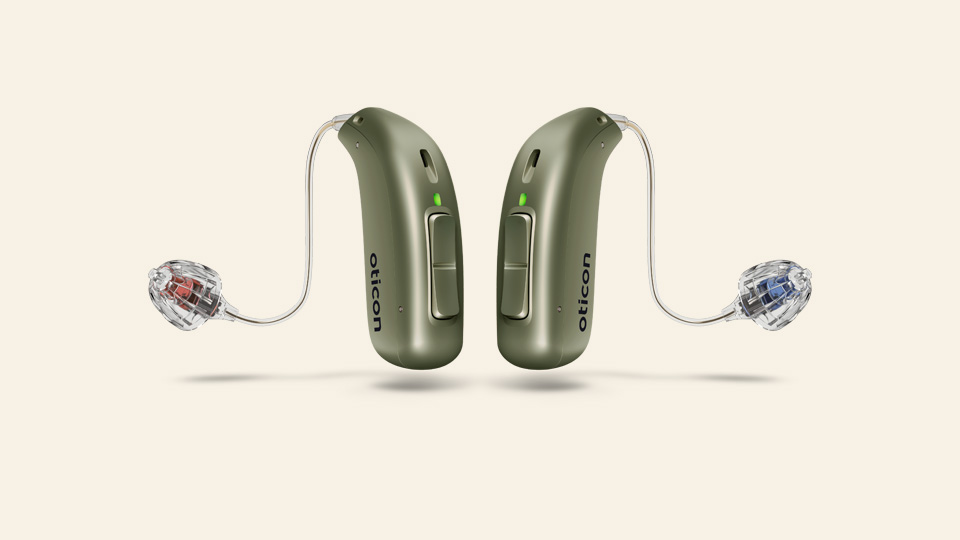Hearing aids
At Hidden Hearing, we offer only the best digital hearing aids and accessories. We have all types of hearing aids from a variety of top hearing aid brands, including invisible hearing aids.

What are you looking for?
At Hidden Hearing, we offer only the best digital hearing aids and accessories. We have all types of hearing aids from a variety of top hearing aid brands, including invisible hearing aids.
A modern hearing aid or hearing instrument is a small device that sits discreetly on the wearer’s head – usually behind the ear, or in the ear. Hearing aids amplify particular parts of the sound environment around the wearer.
Hearing aid technology
Digital hearing aids contain a powerful mini-computer. This takes data gathered by the microphones and analyses the sound environment. The computer is programmed to select the sounds you need help with. The best hearing aids amplify only these parts of the sound. They remove excess noise and play the personalised result directly in your ear.


With Oticon Real™ you can experience the sounds of the real world. By detecting and processing interference, Oticon Real gives you access to all meaningful sounds.
There’s more than one factor to consider when choosing a hearing aid. To make sure you get the one that’s right for you, you’ll need to consider a few things, such as the severity of your hearing loss, ear canal shape, dexterity, lifestyle, your budget and other personal preferences. The guide below will help you get to grips with the differences between the main types of hearing aids.
miniRITE (Receiver-in-the-ear) |
miniRITE R (Receiver-in-the-ear) |
Behind-the-ear Plus/Ultra Power |
|||||
| Most discreet | ✔ | ✔ | - | - | ✔ | ✔ | - |
| Bluetooth connectivity | - | - | ✔ | ✔ | ✔ | ✔ | ✔ |
| Long battery life | - | - | - | ✔ | ✔ | ✔ | ✔ |
| Easy to adjust volume and programmes | - | - | - | ✔ | ✔ | ✔ | ✔ |
| Exchangeable battery | ✔ | ✔ | ✔ | ✔ | ✔ | - | ✔ |
| Rechargeable battery | - | - | - | - | - | ✔ | - |
| Mild to moderate hearing loss | ✔ | ✔ | ✔ | ✔ | ✔ | ✔ | - |
| Severe hearing loss | - | - | - | ✔ | ✔ | ✔ | ✔ |
| Profound hearing loss | - | - | - | - | - | - | ✔ |
At Hidden Hearing, we find solutions that not only improve your hearing, but also enrich your daily life.
We understand that no two individuals are the same, and neither is their hearing. That's why we specialise in tailoring the latest, state-of-the-art hearing technology to compliment your unique lifestyle, needs, and preferences. Whether you're a working professional, a social butterfly, or someone who enjoys relaxing in the great outdoors, a personalised solution helps you get the most out of today's hearing innovation - and your life.


There are many high-quality, reliable hearing aids on the market. Each brand or model is unique in its own way, and it can be difficult knowing where to start. We’ve brought together the most important information about the brands and models we offer at Hidden Hearing. This way, you can get a quick overview of all your available options.
Hearing solutions have gone through major technological innovations during the past decade. Today's digital hearing aids deliver better sound quality and can make your life easier through intelligent, high-tech features.

Hearing aids are not one-size-fits-all solutions. We want to help you find the best model for your needs, one that’s tailored to you. To do this, we’ll help you carefully consider the following: